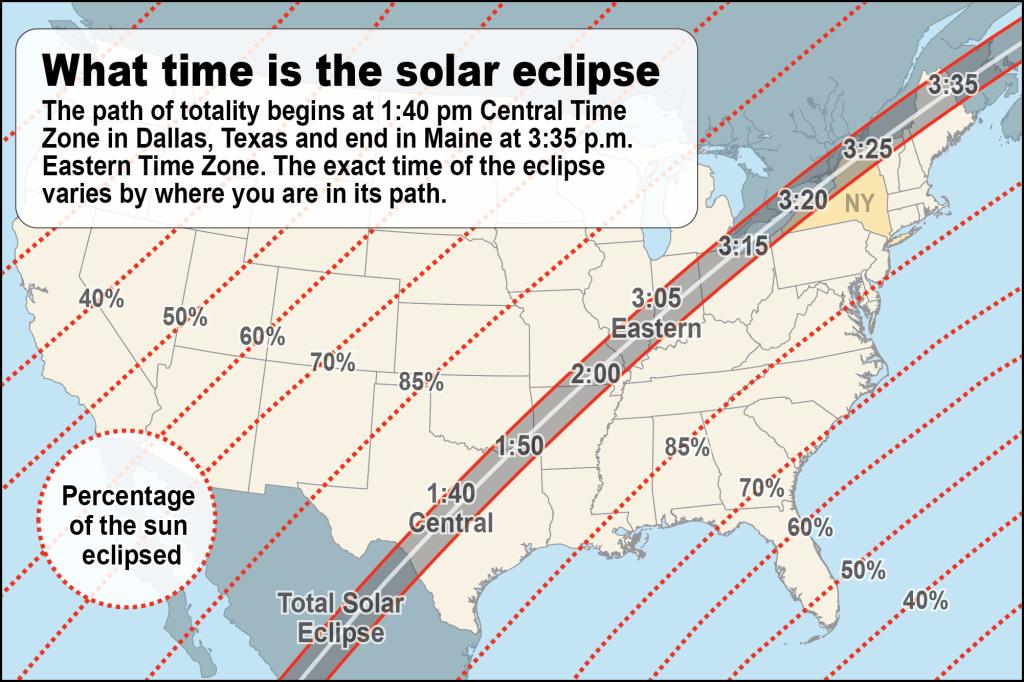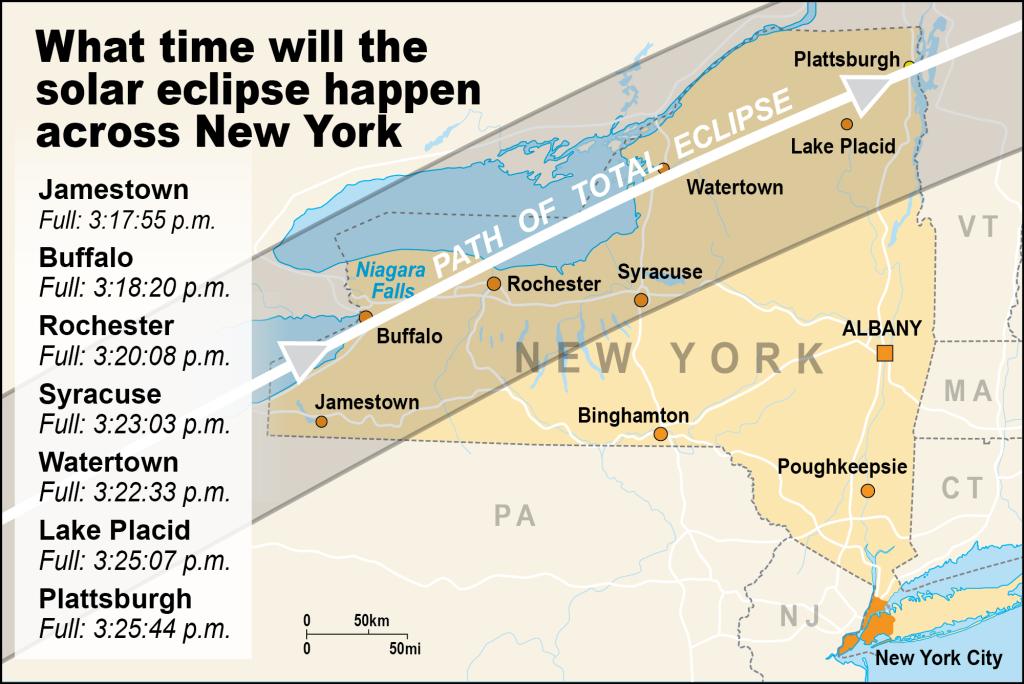What time will the solar eclipse path be visible near you? Everything to know about the celestial phenomenon
The shadow of the moon will soon glide across the United States, dimming the Sun for millions of Americans living in the solar eclipse’s path of totality — while a couple of hundred million others will bear witness to a partial eclipse Monday afternoon.
For New Yorkers living in the Big Apple and other areas outside of the zone of totality, like Westchester and Long Island, a partial eclipse will be visible — weather pending — starting at 2:11 p.m.
Meanwhile, areas upstate like Buffalo, Rochester and Plattsburgh, will experience a total solar eclipse — the moon shrouding the sun in complete darkness — for about four minutes.
In Buffalo, the total solar eclipse will begin at 3:18 p.m. EDT and end at 3:22 p.m., according to NASA.
Rochester is expected to experience the eclipse in its totality at 3:20 p.m., while it will happen in Plattsburgh at 3:25 p.m.
New Yorkers across the state will likely be able to view the spectacle — while wearing NASA-approved eclipse glasses — in some capacity between 2 p.m. and 4:30 p.m.
After leaving New York State, the eclipse will move into Burlington Vermont, where it can be viewed in totality from approximately 3:26 p.m. to 3:29 p.m., according to NASA.
Everything to know about the 2024 solar eclipse
- The solar eclipse will take place Monday, April 8, blocking the sun for over 180 million people in its path.
- The eclipse will expand from Mexico’s Pacific Coast across North America, hitting 15 US states and pulling itself all the way to the coast of Newfoundland, Canada.
- New Yorkers will experience the solar eclipse just after 2 p.m. Monday.
- A huge explosion on the sun, known as a coronal mass ejection, is anticipated, according to experts. This happens when massive particles from the sun are hurled out into space, explains Ryan French of the National Solar Observatory in Boulder, Colorado.
- To avoid serious injury to the eyes, it is necessary to view the event through proper eyewear like eclipse glasses, or a handheld solar viewer, during the partial eclipse phase before and after totality.
- The next total solar eclipse will take place on Aug. 12, 2026, and totality will be visible to those in Greenland, Iceland, Spain, Russia and a small slice of Portugal.
It will be visible in totality in Lancaster, New Hampshire from 3:27 p.m. to 3:30 p.m. and Caribou, Maine, from 3:32 p.m. to 3:34 p.m., the agency added.
The eclipse will first make its way through Texas, where it will be seen in totality from 1:40 p.m. CDT through 1:44 p.m.
It will then make its way through Oklahoma, Arkansas, Missouri, Kentucky, Illinois, Indiana, Ohio, Pennsylvania and finally New York, Vermont, New Hampshire and Maine.
People in Tennessee and Michigan will also be able to see small parts of the eclipse.
The exact timing of the eclipse varies by where someone is located in its path.















